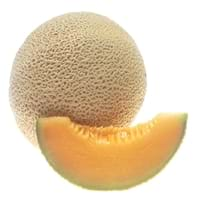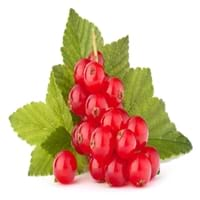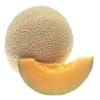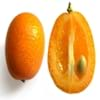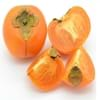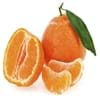Health Benefits
Cancer prevention, Heart care, Improves eye vision, Prevents diabetes, Reduces stress
Cancer prevention, Gout treatment, Heart care, Regulation of heart rate, Treatment of rheumatism
General Benefits
Boosts immune system, Cures cough, Cures fever, Digestive aid, Eye care, Helps in weight loss
Anti oxidant properties, Controls blood pressure, Cures fever, Digestive aid, Healing of wounds, Helps in weight loss, Strengthens bones
Skin Benefits
Anti-aging benefits, Hydrates skin, Skin rejuvenation, Treatment of skin diseases
Brightens and lightens complexion, Reduces wrinkles, Treatment of acne
Hair Benefits
Good conditioner, Prevents hair loss, Protects hair
Protects hair
Allergy Symptoms
Abdominal pains, Anaphylaxis, Breathing difficulty, Diarrhea, Dizziness, Hives, Itching of mouth, Nasal congestion, Nausea, Vomiting
Abnormally rapid heart rate, Anaphylaxis, Breathing difficulty, Hives, Itching, Swallowing difficulties
Side Effects
Allergic reaction, Bloating, Indigestion
Possibly unsafe during pregnancy
Best Time to Eat
As a snack in the late afternoon, Don't consume at night and before bed, Eat the fresh ones, avoid mixing with any other foods, don't eat after meal., Morning time (before lunch)
Best if taken as a breakfast (or empty stomach), As a snack in the late afternoon, Don't eat after meal, Morning time (before lunch)
Vitamin B5 (Pantothenic Acid)
Vitamin C (Ascorbic Acid)
Vitamin K (Phyllochinone)
Phytosterol
Not Available
Calories in Fresh Fruit with Peel
Not Available
Calories in Fresh Fruit without Peel
Not Available
Calories in Frozen Form
Not Available
Calories in Canned Form
Not Available
Not Available
Varieties
Hales Best Jumbo, Sweet 'N Early Hybrid, Hearts of Gold, Ambrosia, Athena, Honey Bun Hybrid, Fastbreak and Superstar
Rovada, Stanza, Red Lake, Junifer and Jonkheer van Tets
Inside Color
Creamy Orange
Red
Taste
Juicy, Musky, Sweet
Sour, Tart
Origin
Africa, India
Europe
Soil Type
Sandy
Moist, Well-drained
Climatic Conditions
Dry, Hot
Cold
Facts about
- Cantaloupe is known as rock-melon in some parts of the world.
- Christopher columbus first introduced cantaloupes to north america in 1494.
- The name 'Cantaloupe' as it is cultivated in papal gardens of cantaloupes, Italy.
- The albino version of red currants known as white currants, are often sold as different fruit.
- Red currant tea is healthy substitute for coffee.
- There are more than 150 varieties of red currants.
Top Producer
China
Russia
Other Countries
Iran, Romania, Turkey, United States of America
Belgium, France, Germany, Ireland, Italy, Netherlands, Poland, Portugal, Scotland, Spain, Sweden, United Kingdom
Top Importer
United States of America
Germany
Top Exporter
Spain
Russia
Botanical Name
Cucumis melo var. cantalupensis
Ribes rubrum
Synonym
Cucumis melo var. reticulatus
Not Available
Subkingdom
Tracheobionta
Tracheobionta
Division
Magnoliophyta
Magnoliophyta
Class
Magnoliopsida
Magnoliopsida
Subclass
Dillenhidae
Rosidae
Order
Cucurbitales
Saxifragales
Family
Cucurbitaceae
Grossulariaceae
Species
C. melo
R. rubrum
Generic Group
Gourd
Saxifrage
Difference Between Cantaloupe and Red Currant
We might think that Cantaloupe and Red Currant are similar with respect to nutritional value and health benefits. But the nutrient content of both fruits is different. Cantaloupe and Red Currant Facts such as their taste, shape, color, and size are also distinct. The difference between Cantaloupe and Red Currant is explained here.
The amount of calories in 100 gm of fresh Cantaloupe and Red Currant with peel is Not Available and 56.00 kcal and the amount of calories without peel is 34.00 kcal and Not Available respectively. Thus, Cantaloupe and Red Currant belong to Low Calorie Fruits and Low Calorie Fruits category.These fruits might or might not differ with respect to their scientific classification. The order of Cantaloupe and Red Currant is Cucurbitales and Saxifragales respectively. Cantaloupe belongs to Cucurbitaceae family and Red Currant belongs to Grossulariaceae family. Cantaloupe belongs to Cucumis genus of C. melo species and Red Currant belongs to Ribes genus of R. rubrum species. Beings plants, both fruits belong to Plantae Kingdom.
